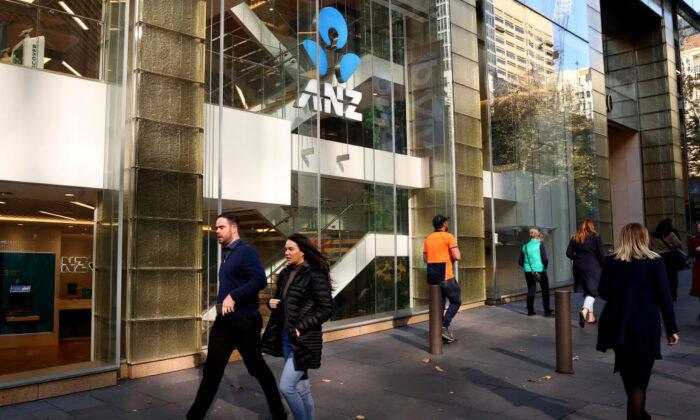Australians have lost hundreds of bank branches and ATMs over the past year, sparking concerns from campaigners that the transition to a cashless society will ultimately disadvantage consumers.
New statistics from the Australian Prudential Regulation Authority (APRA) showed 424 physical bank branches and 718 automatic teller machines (ATMs) had been shut.
Out of the lost bank branches, 122 were in regional and remote areas.
“This continues a trend that has seen branch numbers decline by 34 percent in regional and remote areas, and 37 percent overall, since the end of June 2017,” APRA said.
APRA is the national data collection agency for the financial sector and collects data from banks, credit unions, and building societies for annual publication.

Cash Welcome campaign spokesperson Jason Bryce said there was no incentive for big financial institutions to be part of the cash system.
Mr. Bryce raised concerns that the population was being herded away from cash and onto digital cashless systems.
“This whole cashless society thing is not something that is consumer-led. They are trying to herd us away from what is essentially a publicly owned piece of economic infrastructure—the cash that is issued by the Reserve Bank of Australia—and onto digital cashless payment systems which all charge fees and collect our information.”
Mr. Bryce started up Cash Welcome in response to the 2020 COVID-19 lockdown when his local supermarket and bank went cashless.
Cold Hard Stats Reveal Fast Disappearing ATMs, Branches
The APRA statistics reveal branches and ATM numbers have been slashed every year.In 2017, there were 5,694 physical bank branches across the country. This was reduced to 4,012 in June 2022, and finally to 3,588 in 2023—a 37 percent reduction in six years.
The numbers are more revealing for ATMs numbers dropping 59 percent from 13,814 in June 2017 to 5,693 in June 2023.

“APRA is conscious of the impact of bank branch closures on consumers and businesses, particularly those in regional and remote communities,” APRA member Therese McCarthy Hockey said at the time.
A Global Movement
Australia is not the only country closing physical branches.Wells Fargo closed 15, the U.S. Bank closed nine, and Chase shut three branches.

A poll by the publication showed 51 percent of consumers were concerned about physical branch closures.
Meanwhile, an Australian politician warned this week a cashless society could usher in a change to the way of life of average families saying the shrinking use of cash could spell the end for piggy banks, car boot sales, and the tooth fairy.
Tracey Roberts, the Labor MP representing the seat of Pearce in Western Australia, raised concerns about the “rapid transition” to a cashless society.
Ms. Roberts raised multiple concerns about the push away from cash, including security, cost, privacy, and the impact on small business. Residents in her electorate have raised concerns with her about the shortage of branches and ATM closures.
“Digital payment systems often come with transaction fees that can add up over time. While this might be seen as a minor inconvenience, it can disproportionately affect low-income individuals, who can least afford it,” she said.
However, the federal Labor government is currently aiming to “modernise” Australia’s payment system. Back in June, Treasurer Jim Chalmers released a strategic plan to achieve this.
This included the phasing out of cheques by 2030, and the alignment of “payment systems with other reforms” including the impending national digital ID.
Another key element of the plan is to make “Australia a leader in global payments,” including working with the G20 and Pacific to pilot a “central bank digital currency.”
On Oct. 11, Mr. Charmers released draft legislation to amend the Payment Systems (Regulation) Act 1998. This would enable the Reserve Bank of Australia to modern payment systems such as digital wallets and Buy Now, Pay Later (BNPL) providers.






